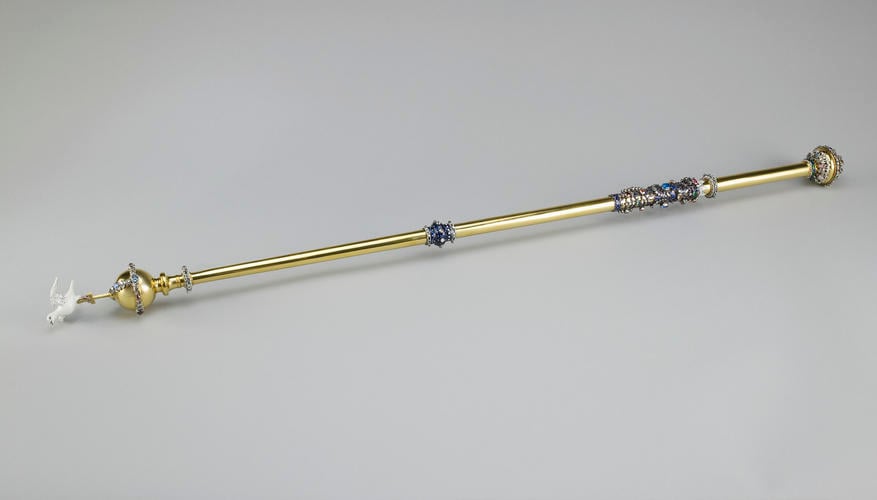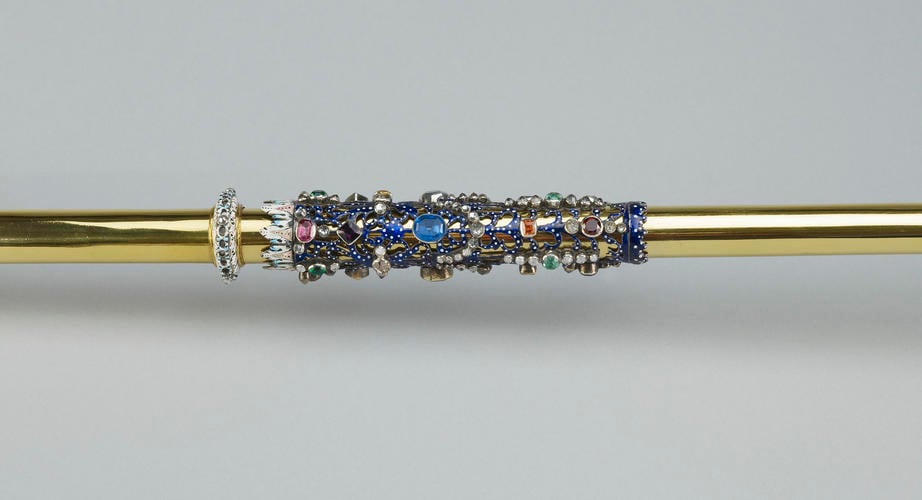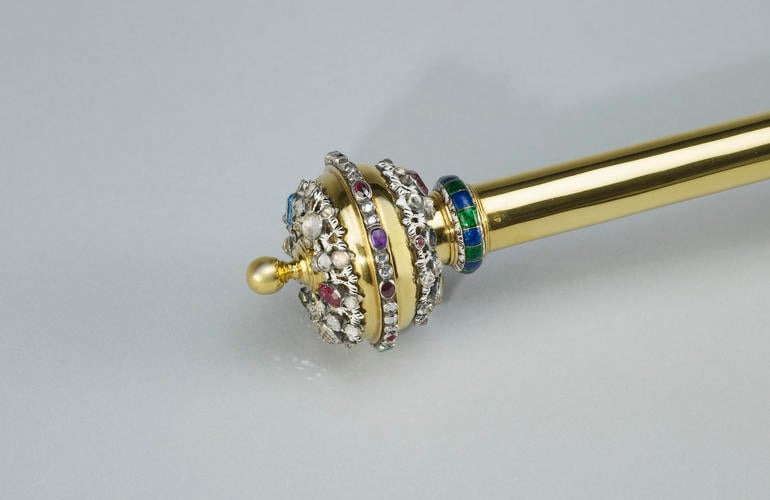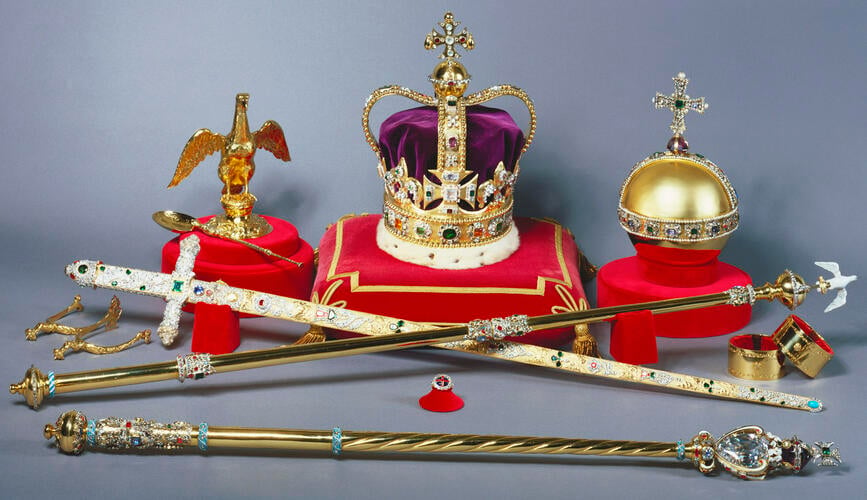-
1 of 253523 objects
Mary II's Sceptre with Dove 1689
Gold, silver, enamel, rock crystals (quartzes), garnets, amethysts, emeralds, citrines, sapphires and pastes (glass) | 100.4 cm (whole object) | RCIN 31714

Robert Vyner the Younger (active 1689)
Mary II's Sceptre with Dove 1689

Robert Vyner the Younger (active 1689)
Mary II's Sceptre with Dove 1689

Robert Vyner the Younger (active 1689)
Mary II's Sceptre with Dove 1689

Robert Vyner the Younger (active 1689)
Mary II's Sceptre with Dove 1689

Robert Vyner the Younger (active 1689)
The Ampulla 1689





-
A gold and silver sceptre in three sections, surmounted by a gold monde with applied gold zone and arc, set with blue pastes, garnets and table-, rose- and mixed-cut diamonds with a plain gold cross on which is perched the enamelled dove with outspread wings. At the junctions of the rod are enamelled collars, set with colourless stones (quartzes), coloured pastes, emeralds, garnets and citrines. The lower part of second section has a fretted silver and enamel sleeve set with coloured stones. At the base is a compressed pommel set with table- and rose-cut stones and partly enamelled. The sceptre represents the sovereign's spiritual role, with the dove representing the Holy Ghost. Traditionally it has been known as 'the Rod of Equity and Mercy'. At the coronation of William I (the Conqueror) in 1066, this role was emphasised in a contemporary description: 'For by the sceptre uprisings in the kingdom are controlled and the rod gathers and confines those men that stray'. The monarch's pastoral care of his people is therefore bound up with this sceptre or rod. During the coronation service the new sovereign is first anointed with holy oil, then robed in coronation robes, and then invested with a number of ornaments symbolising the chivalric and spiritual nature of kingship. These include the spurs, swords and armills, followed by the orb, a ring and then the sceptres. The sovereign is presented with two sceptres - one surmounted by a cross representing temporal power and this one surmounted by a dove. After the investiture the sovereign is then crowned. This sceptre was made in 1689 for Mary II, who, as a joint sovereign with her husband William III, required her own full set of regalia. Although this was the only coronation in history where a second set of sovereign's regalia was supplied, the sceptre was restored for subsequent coronations, and it may have undergone some alterations in 1820 for the coronation of George IV, even though it was not in use in the official ceremony. It was originally set with hired stones, later replaced with false stones, and at some point after 1768, set with real stones.
Provenance
Supplied to Mary II for her coronation in 1689 by Sir Robert Vyner, royal goldsmith.
-
Creator(s)
(retailer/supplier)Acquirer(s)
-
Medium and techniques
Gold, silver, enamel, rock crystals (quartzes), garnets, amethysts, emeralds, citrines, sapphires and pastes (glass)
gold, silver, white enamel, black enamel, blue enamel, pink enamel, quartz crystal, almandine, amethyst, smoky quartz, emerald, sapphire, paste (glass), citrineMeasurements
100.4 cm (whole object)
1050.0 g (Weight) (whole object)